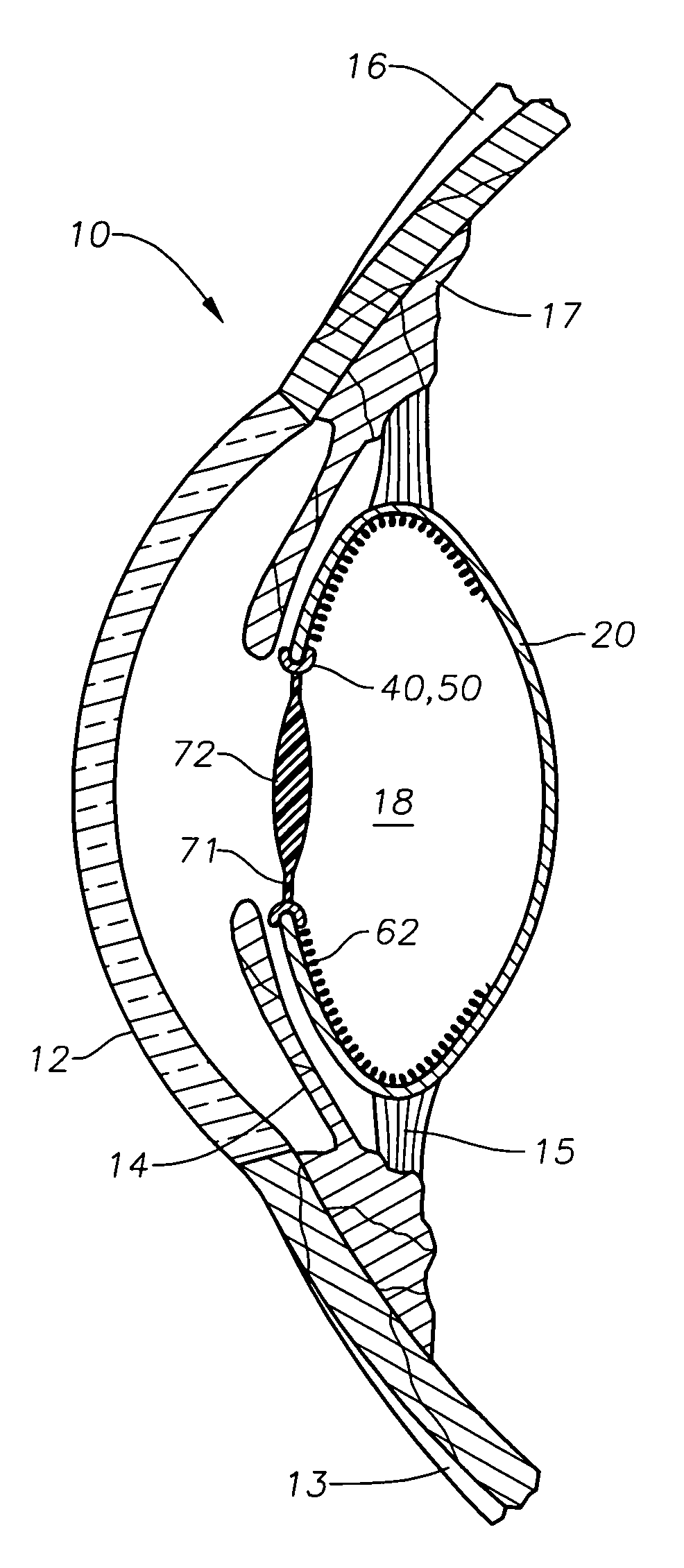Intracapsular pseudophakic device
a pseudophakic device and lens capsule technology, applied in the field of intracapsular pseudophakic devices, can solve the problems of increasing the chances of nighttime glare and halos, limited accommodation, and limited conventional (monofocal) iol, so as to prevent fibrosis or collapse, and maintain the volume of the lens capsul
- Summary
- Abstract
- Description
- Claims
- Application Information
AI Technical Summary
Benefits of technology
Problems solved by technology
Method used
Image
Examples
Embodiment Construction
[0025]Referring to FIG. 1, a cross-sectional view of the anterior portion on an eye, which may be a human eye, is shown. Eye 10 includes cornea 12, sclera 13, iris 14, zonules 15, conjunctiva 16, ciliary body 17, lens capsule 18, anterior capsule 19, posterior capsule 20 and capsule equator or fornix 22. The development of presbyopia and cataracts in the human eye are associated with changes in natural lens capsule 18 and its contents. Surgical procedures to remove cataracts from lens capsule 18 or to implant intraocular lenses, either accommodating or fixed, involve making an incision through cornea 12 or sclera 13 and forming an opening in capsule 19 (a capsulorhexis). The size of the external incision is minimized to limit trauma to the patient's eye and allow faster healing. Common sizes of the incision are 2.5 to 3 millimeters, however there is a trend to make smaller incisions, such as 1.5 millimeter.
[0026]FIG. 2a shows a plan view of an optic and attached haptics according to...
PUM
 Login to View More
Login to View More Abstract
Description
Claims
Application Information
 Login to View More
Login to View More - R&D
- Intellectual Property
- Life Sciences
- Materials
- Tech Scout
- Unparalleled Data Quality
- Higher Quality Content
- 60% Fewer Hallucinations
Browse by: Latest US Patents, China's latest patents, Technical Efficacy Thesaurus, Application Domain, Technology Topic, Popular Technical Reports.
© 2025 PatSnap. All rights reserved.Legal|Privacy policy|Modern Slavery Act Transparency Statement|Sitemap|About US| Contact US: help@patsnap.com



